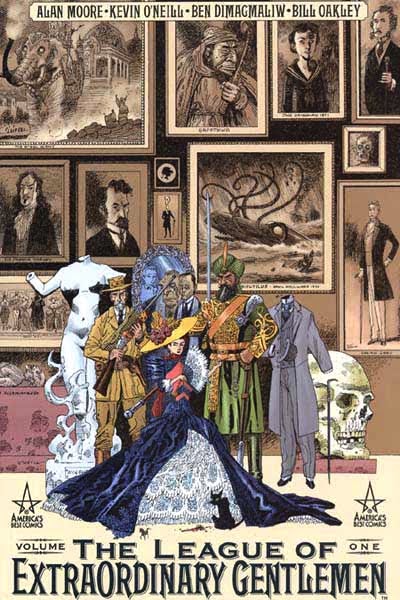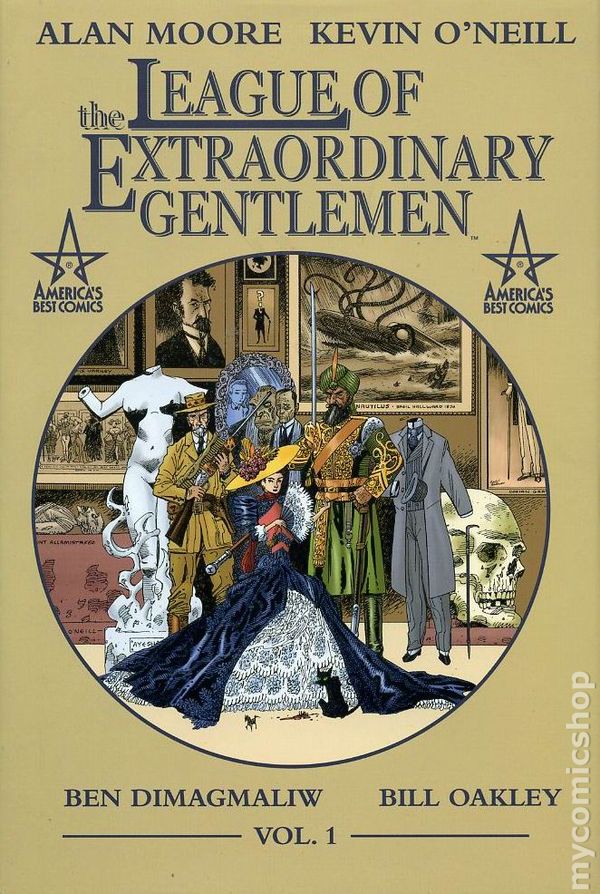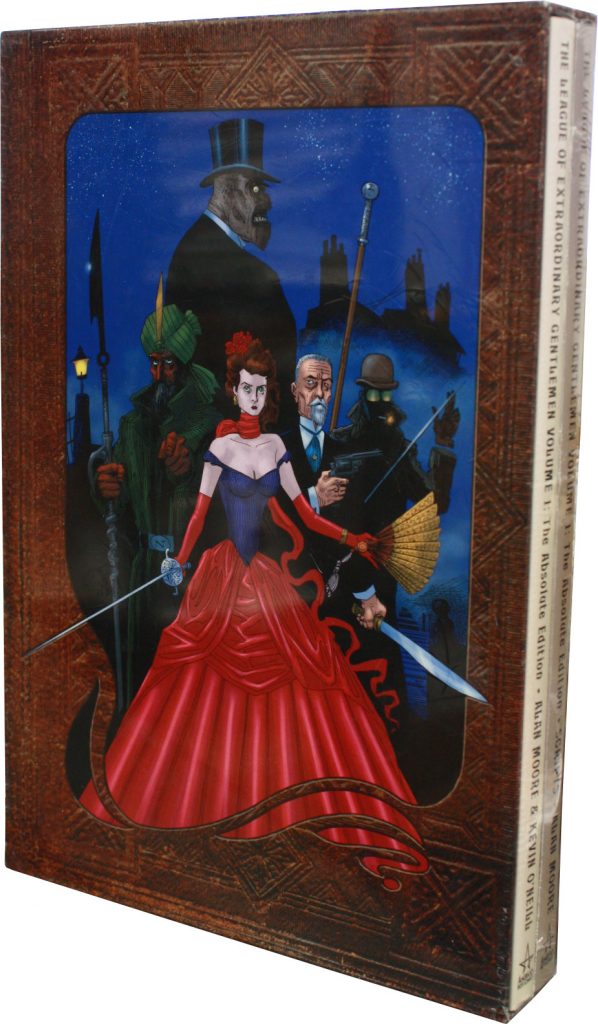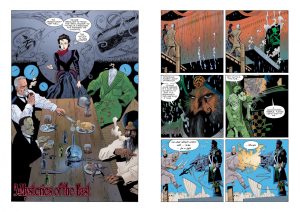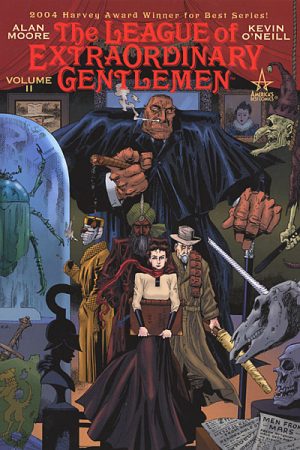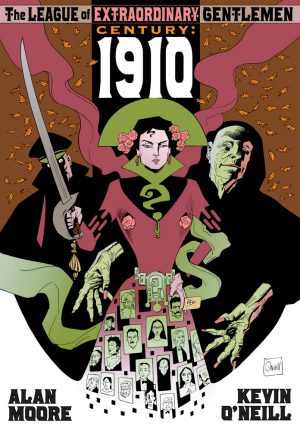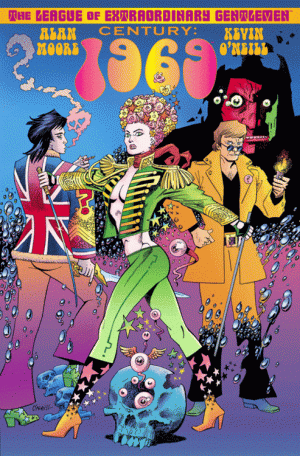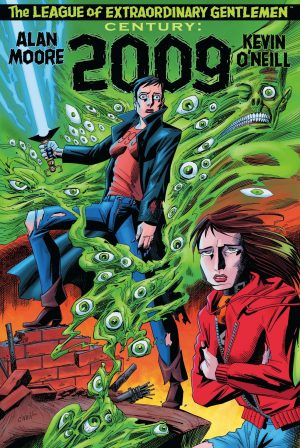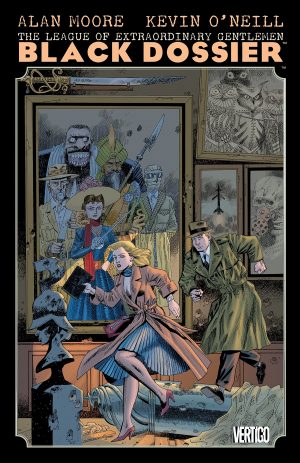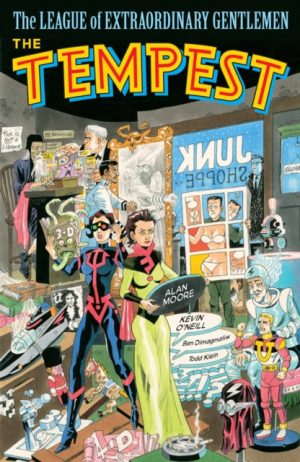Review by Graham Johnstone
In 1898, emancipated divorcee Wilhelmina Murray is tasked by the Crown to gather a “menagerie” to help the British Empire in its latest hour of need.
So begins the League of Extraordinary Gentlemen franchise, which spans a century of story, and a score of years creation for Alan Moore, Kevin O’Neill and collaborators. It’s a brilliant concept: a proto-superhero team of characters assembled from Victorian fiction, and no surprise that film rights were snapped up, though – by critical consensus – squandered. Happily, Moore, makes better use of the premise, combining Watchmen’s astute deconstruction of pre-existing source material, with From Hell’s critique of Victorian society.
Though credibly forerunners of superheroes, this cast are at best anti-heroes. Murray, (better known as Mina Harker), is clouded in scandal involving a sinister foreigner: Bram Stoker’s Dracula. H. Rider Haggard’s big-game hunter Allan Quatermain, is a broken man, needing rescued by Murray from an Egyptian opium den (pictured, right). This pair investigate supposed immaculate conceptions in a girls school, to find the cause not sacred, but profane: Hawley Griffin, (H.G. Wells’ Invisible Man). The seafaring rebel Captain Nemo, might be a hero to some, but the team’s moral flexibility is best highlighted by the inclusion of Henry Jekyll, who they’re happy to unleash as rampaging beast Mr Hyde.
Others can be clearly identified in an entertaining parade of witty cameos, like Poe’s Inspector Dupin, and some barely glimpsed. Such intertextual plundering is an acknowledged technique of contemporary fiction, but few can have cast the net as wide as Moore. Just the few pages in a school incorporate Henry James’ proto-feminist Olive, What Katy Did and other girls’ novels, while the disciplinarian headmistress comes from an under-the-counter periodical. This is more than a spotters delight, as each casts light on the school, and roles of women in the era’s fiction. Pollyanna typically looks on the bright side after her ordeal, while the emancipated Murray both solves the school’s mystery and – improvising with domestic items – apprehends the culprit.
Moore’s planning and chronology is meticulous. The 1898 setting catches Murray and Griffin fresh from their published adventures (both 1897). Quatermain is a decade on from his previous middle-aged adventures, and even a passing cameo of the Artful Dodger has Dickens’ urchin now an old man. Few will spot all the characters, but there’s a book-length guide available.
The story certainly fulfils its mock-Victorian cover blurb as “rousing adventure”, with spectacular settings, terrifying technology, and a heroic heist. The literary references then can be treated as easter eggs for those who want to find them. It would be tempting to carry the story with pastiche period narration, but Moore avoids this, limiting captions to brief statements of time and place. Instead it’s carried by sparklingly elegant dialogue, propelling the action, offering glimpses of backstory, and developing complex team relationships that come to a head in Volume 2.
Kevin O’Neill brilliantly turns his hands to the smog, candlelit rooms, and steampunk technology. He doesn’t sacrifice storytelling for style though. Notice how the chapter splash page (featured left) reintroduces the team. Ben Dimagaliw’s colouring is beautiful and restrained. At times it threatens to obscure O’Neill’s virtuoso (and here suitably Victorian) penmanship, but the overall effect is still dazzling.
All the original covers, serialised text story, mock-victorian front-matter and spoof adverts are included. The deluxe Absolute Edition adds Moore’s scripts, and this has since been incorporated into The League of Extraordinary Gentleman Omnibus.
Everyone from the scholars of Victorian literature to chance purchasers should enjoy this brilliant concept artfully realised.
